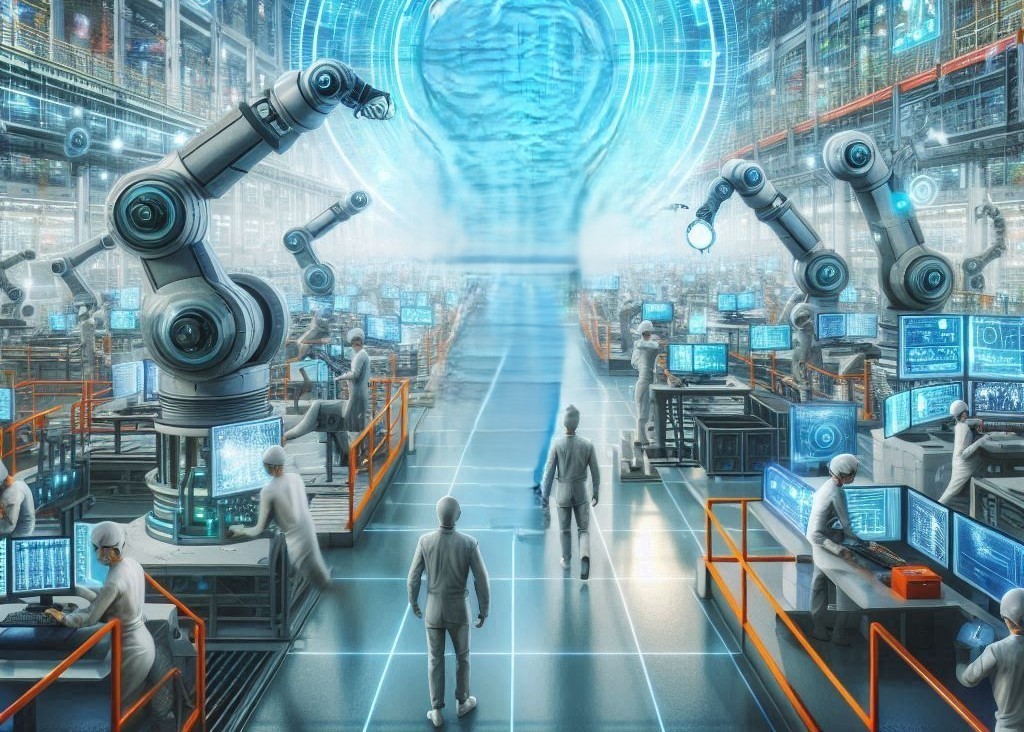The Future Fast
The factory of the
future is here
A smart factory built in Ireland, using South African innovation from Syspro, points the way to future manufacturing, writes ARTHUR GOLDSTUCK.
The concept of the smart factory has been a futuristic vision ever since Henry Ford switched on the first moving assembly line 110 years ago. Now, it is finally becoming a tangible reality, driven by technological advancements, artificial intelligence, and urgent needs highlighted by the Covid-19 pandemic in 2020.
In a fascinating twist on the usual tale of such technology being imported from North America or Europe, one of the best demonstrations of its potential has come from the implementation by a South African team setting up a manufacturing simulation factory in Ireland.
Syspro, a developer of enterprise resource planning (ERP) software solutions, was founded in South Africa 50 years ago and now operates in more than 60 countries. It was chosen by Bonner, an Irish automation, calibration and instrumentation product manufacturer, to install an ERP system that would help showcase the potential of fully integrated smart factories.
“I needed an ERP fit for a world class factory of the future,” said Bonner MD Patrick Bonner. “Syspro was the clear winner. We recently worked with a consortium of Irish businesses, led by (multinational robotic company) ABB for a project backed by the Irish government to build a world class manufacturing facility.
“We’ve worked with the most innovative machine builders in the country, the newest technologies and systems, to make Digital Manufacturing Ireland. It’s a best-in-class, fully automated manufacturing facility in Limerick. Robots and production lines all operate seamlessly, from order to fulfillment to dispatch, to illustrate how digital technology is revolutionising manufacturing.
“To look at it from the outside, it appears deceptively simple, but to achieve that level of efficiency is complex, and we needed a tool that can tie a lot of it together, something able to handle communication with its systems and operators and collate, monitor, and report, to fully optimise and gain maximum output. “

According to Zaren Ramlugan, Syspro specialist solutions manager for EMEA and APCA, the example illustrates the profound impact that smart factory technology can have on efficiency and productivity, thanks to integration of new capabilities.
“The pandemic pushed businesses to confront essential questions about profitability, production capacity, and operational efficiency,” he said. “Stakeholders and shareholders demanded answers on how to sustain and optimise their operations. This urgency highlighted the need for real-time data and operational visibility, driving a surge in digital transformation initiatives across industries.
“The primary requirement from business was to get a real-time visibility view of the factory or the production facility.”
In response, Syspro developed a toolset called Manufacturing Operations Management (MOM), which integrates real-time factory data directly into the ERP system.
“With MOM, businesses can see real-time information about constraints and operational statuses, allowing for swift and informed decision-making,” said Ramlugan.
Rather than eliminating jobs, the introduction of such digital transformation tools creates new roles focused on data analysis and strategic decision-making.
“Digital transformation doesn’t eliminate jobs; it evolves them. You need the human element to understand the data points and exercise operational efficiency. It’s about making life easier for workers by reducing mundane tasks and allowing them to focus on strategic work.”
However, change management is crucial for successful implementation, demanding a methodical approach that involves human resources officers early in the process.
“We have a methodology called IDEAL, which holistically assesses business requirements, system capabilities, and human roles to design effective solutions. This methodology ensures that individuals are empowered, upskilled, and ready to embrace new technologies, facilitating a smooth transition.”
Education and training are critical components of this transition. Ramlugan highlights the need for businesses to invest in upskilling their workforce.
“Education, education, education. It’s about taking a process and allowing the user to embrace what is coming and how they will be contributing to this change.”
* Arthur Goldstuck is CEO of World Wide Worx and editor-in-chief of Gadget.co.za. Follow him on social media on @art2gee.



















